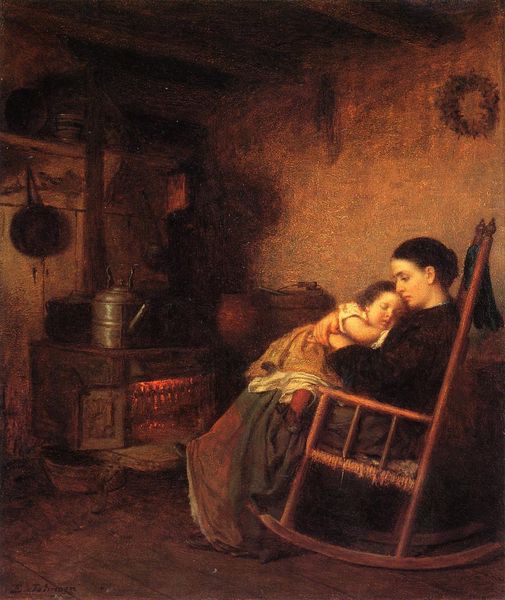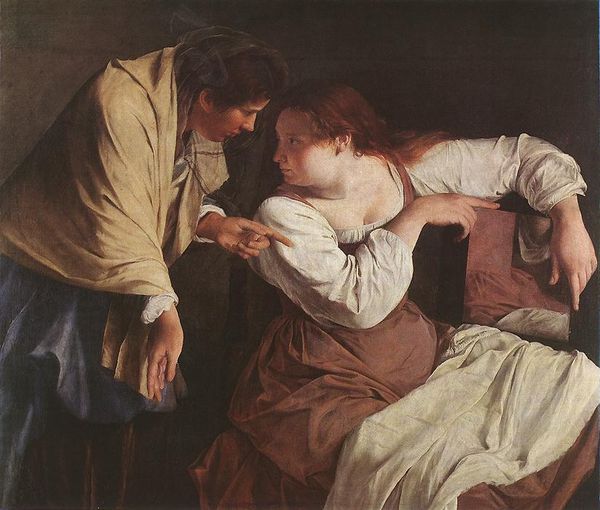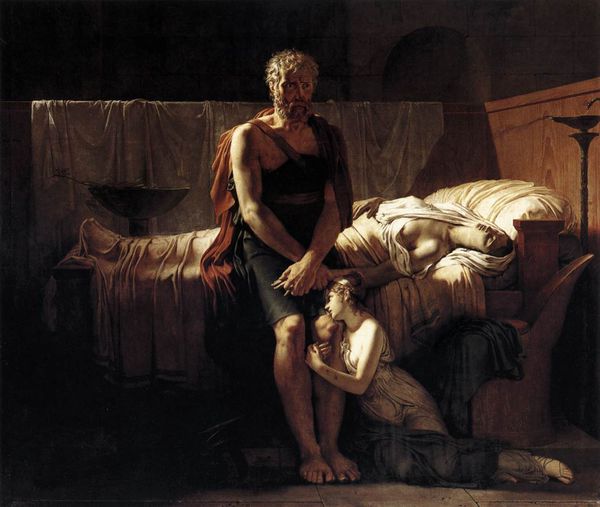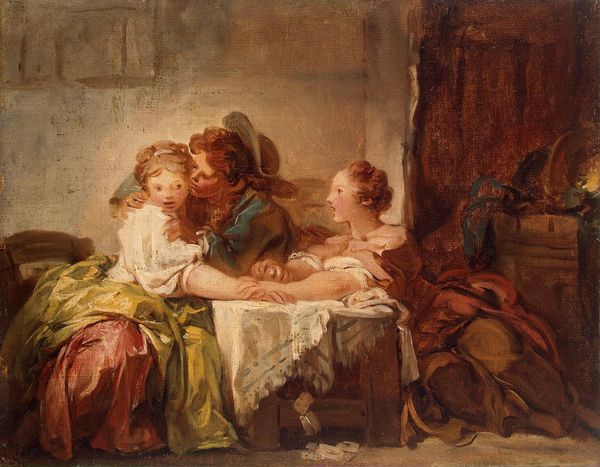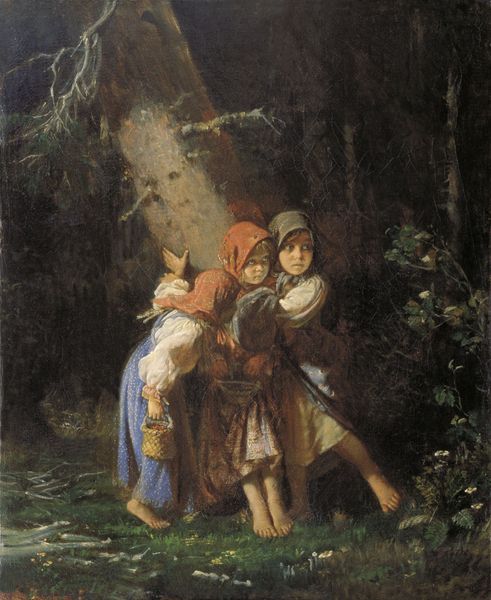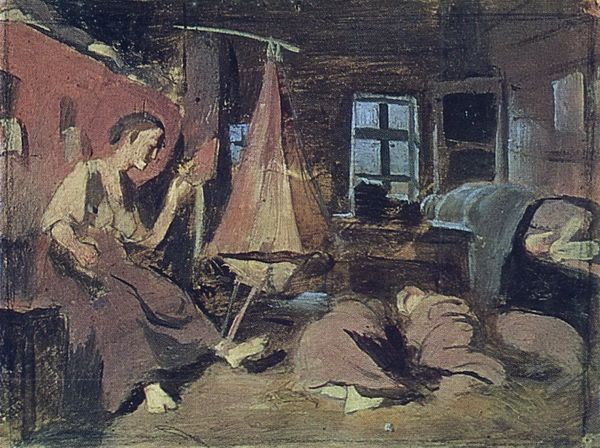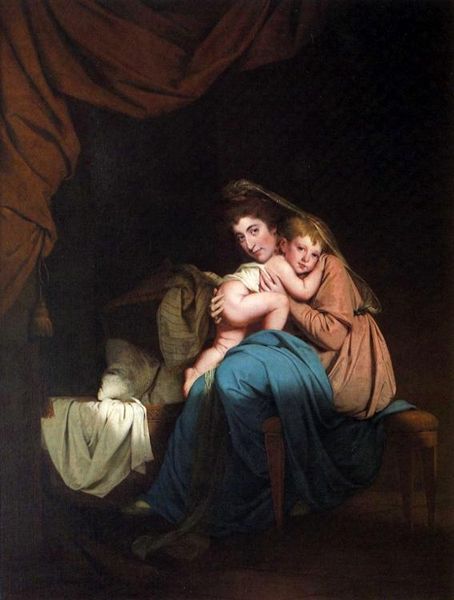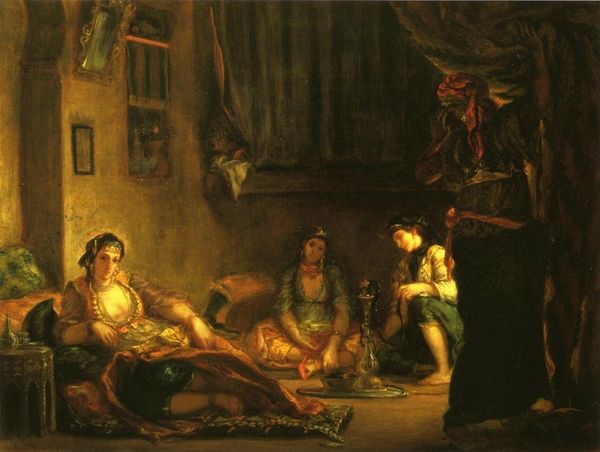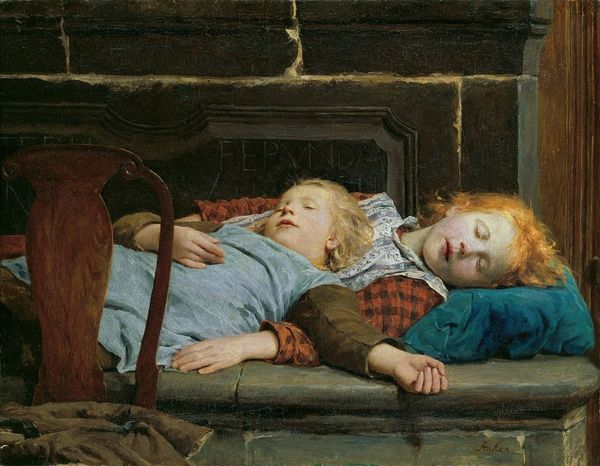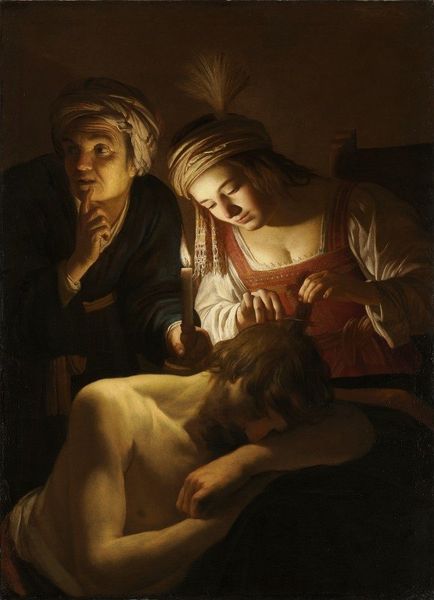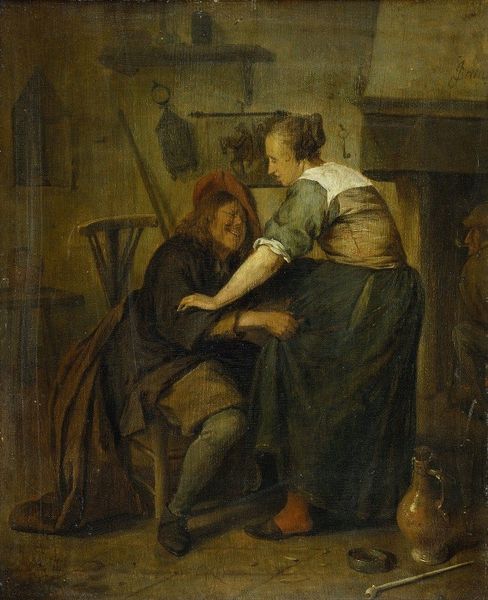
Dimensions: 53 x 61 cm
Copyright: Public domain
Editor: So, this is Vasily Perov’s "Children Sleeping," an oil painting from 1870 currently held at the Tretyakov Gallery. It strikes me as a poignant, almost unsettling piece, particularly given the stark realism in the children’s bare feet and worn clothes. How do you interpret the composition and its effect on the viewer? Curator: Note how Perov directs the light. The figures are rendered in striking detail, with strong chiaroscuro emphasizing their forms against the somber backdrop. The texture of the hay, rendered through visible brushstrokes, provides a contrasting tactile quality. Consider the horizontal arrangement; it underscores the passivity and vulnerability of the children. Editor: Vulnerability certainly comes across. Does the artist's specific technique, maybe the subdued palette, further inform our reading? Curator: Indeed. Perov's palette, composed predominantly of earth tones, heightens the somber mood. These are not romanticized images; rather, Perov seems intent on presenting an unvarnished portrayal of impoverished children. Consider also how the texture achieved by oil paint lends the surface depth that mirrors the reality depicted. Does this surface treatment not heighten the image's affective power? Editor: It definitely intensifies the feeling of hardship. So, rather than searching for hidden meanings, we focus on how the formal elements create this sense of...resignation? Curator: Precisely. Through his meticulous attention to line, light, form, and texture, Perov evokes a powerful emotional response. The painting itself, not necessarily the narrative, speaks most eloquently. Editor: That makes a lot of sense. I will definitely approach other artworks with an increased focus on the interplay between technique and feeling, thinking about how visual strategies convey certain impressions. Curator: An astute observation. Approaching artworks through formal elements equips you with analytical skills beyond historical contextualization.
Comments
No comments
Be the first to comment and join the conversation on the ultimate creative platform.

